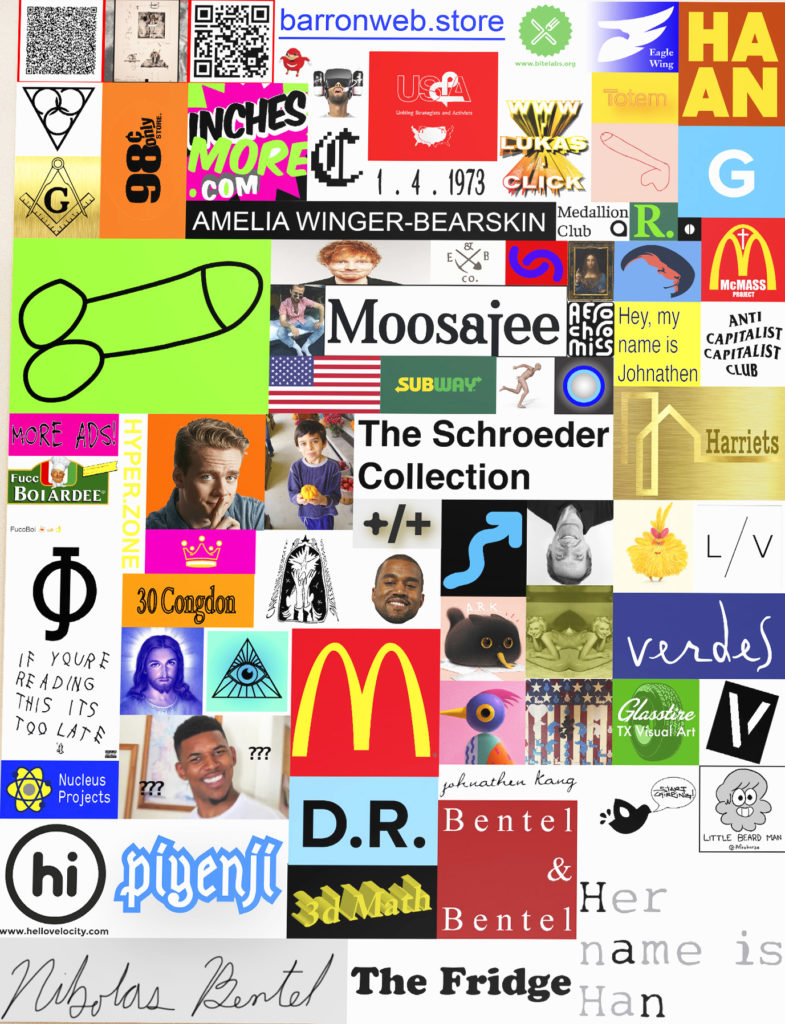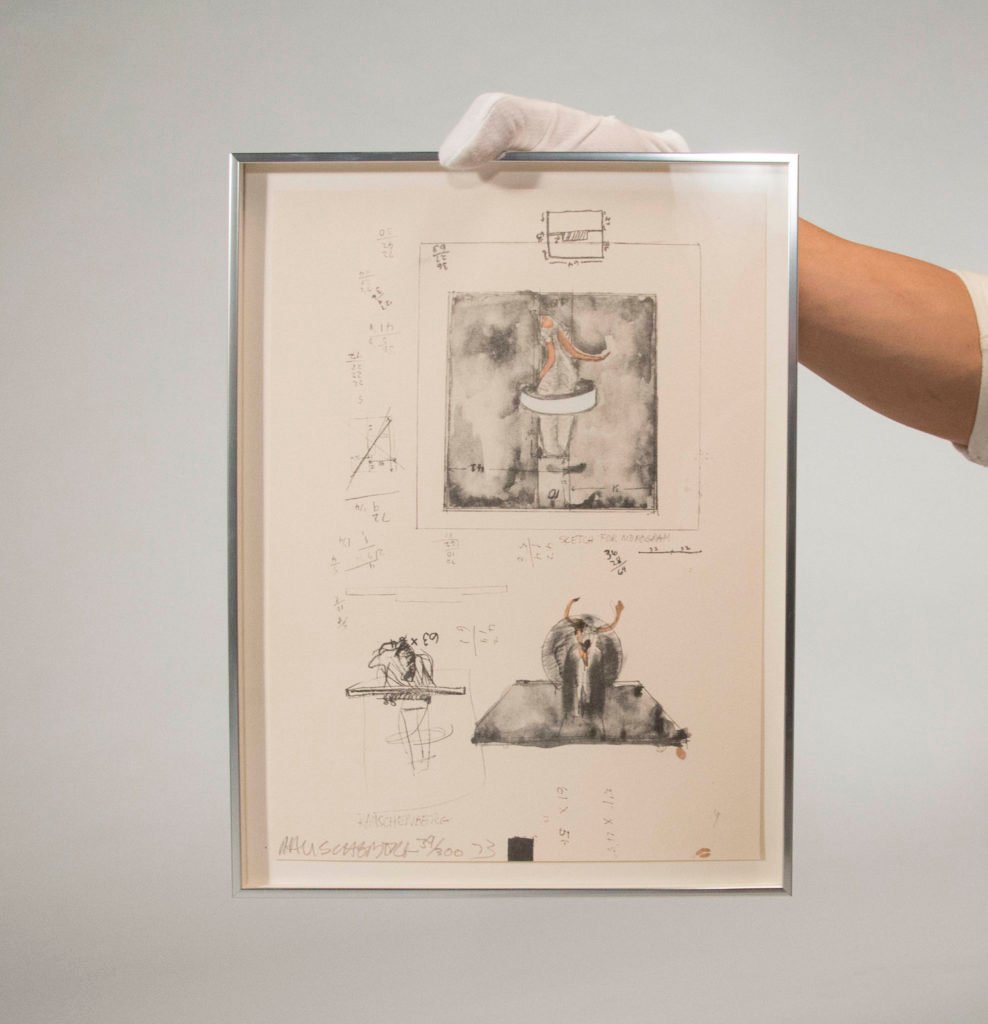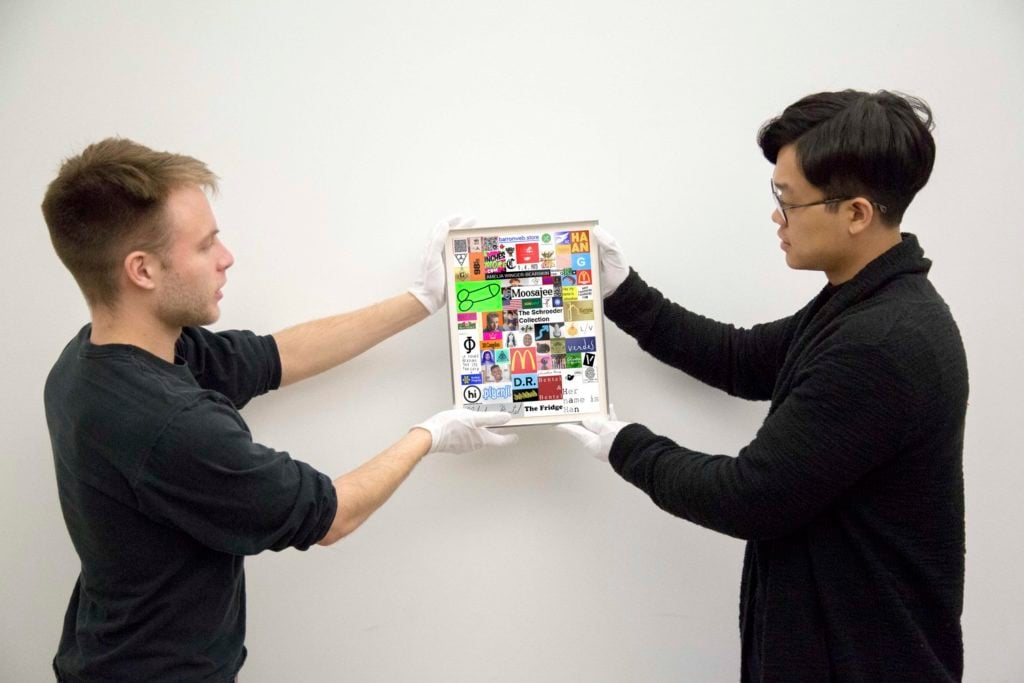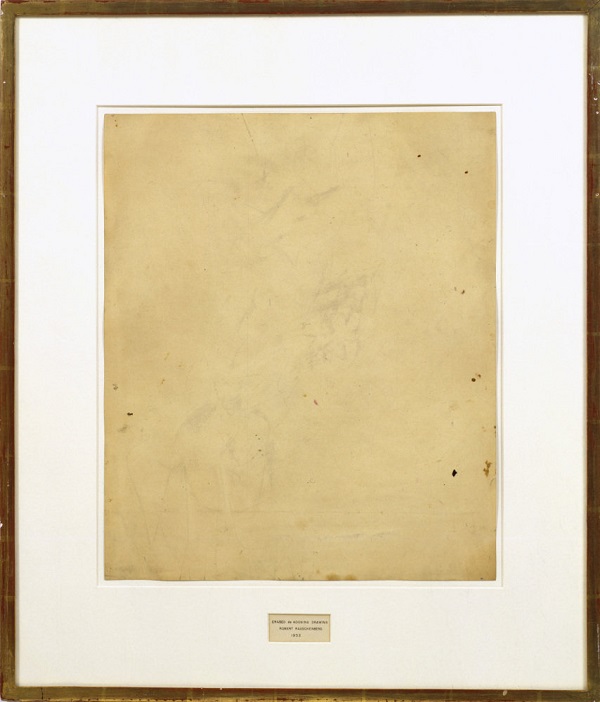Art World
This Artist Sold Ads to Cover a Robert Rauschenberg Work. Now He’s Auctioning It Off for $20,000.
The proceeds of artist Nikolas Bentel's "erased" Rauschenberg work will go to charity.

The proceeds of artist Nikolas Bentel's "erased" Rauschenberg work will go to charity.

Sarah Cascone

Last month, New York artist Nikolas Bentel caused a stir when he announced his plan to purchase a print by Robert Rauschenberg and cover it with ads, thereby “erasing” the original (as Rauschenberg famously erased a Willem de Kooning drawing in 1953). Now, Bentel will auction off his hybridized work, which he paid for with revenue from the ad sales, with a starting price of $20,000—twice the cost of the print.
The proceeds from the sale, which runs March 5-9 on the project’s website, will go toward establishing a scholarship at New Inc, the art and design incubator at New York’s New Museum where Bentel is a student.
Last night, at a dinner hosted by Ruinart celebrating New Inc, Bentel revealed the finished product. The original Rauschenberg work was completely unrecognizable, replaced by ads for local businesses, the symbol for the Illuminati, a couple of personal photos, and other assorted imagery. (As per the deal, Bentel’s backers could fill their space, purchased at $92.59 per square inch, with whatever they wanted.)

Nikolas Bentel has “erased” Robert Rauschenberg’s Untitled (1973) by selling advertisements to cover the original print. Courtesy of Nikolas Bentel.
“Some random person bought six squares to show a dick,” he told artnet News. Other unusual purchases include a McDonald’s logo—not paid for by the fast food giant—an American flag, a portrait of Jesus, and a pair of QR codes that direct to a page on a professor’s website that’s dedicated to the project. “I do not know him,” Bentel said. “I was like, ‘you are so nice!'”
It was complex symbols like QR codes that forced the artist to abandon his original plan of hand-painting the advertisements. “There was zero chance I was going to be able to do that!” Bentel said. Instead, the ads were screen-printed over the work.

Nikolas Bentel and Ho Jae Kim with The Erased Rauschenberg. Photo courtesy of Nikolas Bentel.
As a young man, Rauschenberg approached Willem de Kooning and asked for one of his drawings, declaring his intention to erase the picture to create a new work, and de Kooning reluctantly agreed. Bentel’s project is also an artistic collaboration with the Rauschenberg’s original owner, artist and collector Ho Jae Kim, who more gamely agreed to the work’s destruction.
“Then as it is now, appropriation is the best sort of flattery,” Julia Blaut, director of curatorial affairs at the Robert Rauschenberg Foundation, told Mic. “Nikolas Bentel’s use of a Rauschenberg print is evidence that Rauschenberg remains a central figure to young artists today—he is the person to ‘relate to’ and to move beyond.”

Robert Rauschenberg, Erased de Kooning Drawing (1953). Courtesy of the San Francisco Museum of Modern Art, ©Robert Rauschenberg Foundation.
Bentel’s project builds on Rauschenberg’s transgressive action and also serves as a critique of the art market, which often values price over cultural significance. (Rauschenberg was himself an outspoken critic of collectors who resold work at auction for massive profits that the artist would never see.) At the same time, however, the sale of The Erased Rauschenberg will also help young artists working to create their own work, bringing the project full circle.